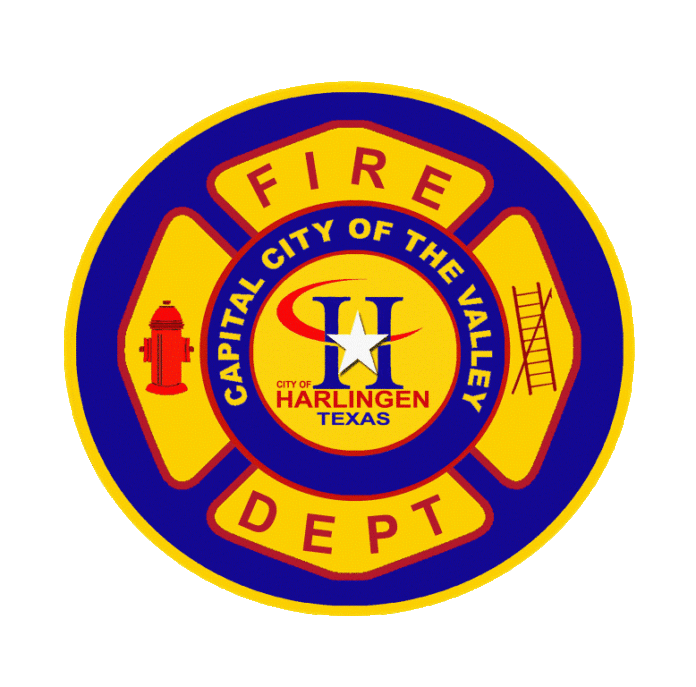HARLINGEN — Fires are capable of spreading rapidly throughout your home, leaving you with a feeling of panic and little time to safely escape its roaring flames and thick clouds of smoke.
Harlingen firefighters are continuing their efforts to help families be prepared for these situations by teaching them their evacuation plan called “Exist Drills in the Home.”
This plan teaches families the importance of creating two escape routes in each section of their house and a planned meeting spot after escaping the fire.
“We recommend meeting somewhere outside of the home that’s away from the danger zone, such as near the mailbox or a neighbor’s yard,” said Harlingen Assistant Fire Marshal Joey Albritton.
“A good landmark would be a tree in the yard. But that’s for the family to decide, as long as they have a meeting place and talk about never going back into the home to recover any belongings or things like that.”
According to the Harlingen Fire Department website, cooking-related fires are nationally the number one cause of home fires and home injuries.
Most cooking fires in homes involve stovetops so fire department personnel urge people to stay alert, cautious and never leave the stove unattended when it is in use. Additionally, they recommend keeping flammable items, such as oven mitts, utensils, food packaging, towels and curtains away from stovetops.
Another way household fires start is from overloaded electrical outlets.
Harlingen Fire Department personnel discourage the use of extension cords for anything except for just a temporary application. They recommend plugging in large applications directly into an outlet instead of into an extension cord.
Albritton explained that there isn’t necessarily an indication that wooden houses are more susceptible to having fires than brick houses since both types of houses have wooden frames.
“Anytime you have a fire, in the walls or if it started even outside the walls like by the kitchen, if it ever gets to the structure of the house, it’s going to have the tendency to spread fast,” he said. “So, wood frames have more fuel load because they have more wood in them. But just because they’re wood, doesn’t necessarily mean that they’re going to burn versus a brick house because it also has a wooden frame to it.”
He said the importance is to have smoke alarms in place in sleeping quarters so if there is a fire, the occupants of the house would be alerted by the smoke alarms.
“We recommend that people test their smoke alarms monthly,” Albritton said. “On the back of each smoke alarm, it has a date stamp and smoke alarms have a life span of 10 years so if the smoke alarm is more than 10 years old it needs to be replaced.”
Cooking safety tips
• Be on alert. If you’re sleepy or have consumed alcohol don’t use the stove or stovetop.
• Stay in the kitchen while you’re frying, grilling or broiling food. If you leave the kitchen for even a short period of time, turn off the stove.
• If you’re simmering, baking, roasting or boiling food, check it regularly, remain in the home while food is cooking and use a timer to remind you that you’re cooking.
• Keep anything that can catch fire, such as oven mitts, wooden utensils, food packaging, towels or curtains away from stovetops.
If you have a cooking fire
• Get out of the house. When you leave, close the door behind you to help contain the fire.
• Call 9-1-1 or the local emergency number after you leave.
• If you try to fight the fire, be sure others are getting out and you have a clear way out.
• Keep a lid nearby when you’re cooking to smother small grease fires. Smother the fire by sliding the lid over the pan and turn off the stovetop. Leave the pan covered until it’s completely cooled.
• For an oven fire turn off the heat and keep the door closed.
Candle safety tips
• Blow out all candles when you leave the room or go to bed. Avoid use of candles in the bedroom and other areas where people may fall asleep.
• Keep candles at least 12 inches away from flammable items.
• Use candle holders that are sturdy and won’t tip over easily.
• Put candle holders on a sturdy, uncluttered surface.
• Light candles carefully. Keep your hair and any loose clothing away from the flame.
• Don’t burn a candle all the way down. Put it out before it gets too close to the holder or container.
• Never use a candle if oxygen is used in the home.
• Have flashlights and battery-powered lighting ready to use during a power outage. Never use candles.
Source: National Fire Protection Association





